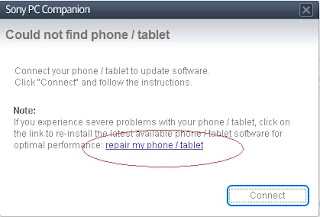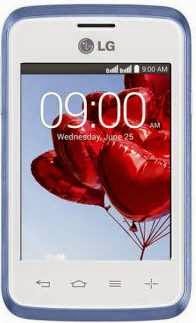Iphone 6 Review
For a variety of reasons, from the camera to the app ecosystem to the hardware itself, the iPhone 6 is one of the best smartphones on the market. Maybe even the best. But it’s still an iPhone. The same thing Apple’s been making for seven years. A fantastically good iPhone, but an iPhone through and through.

Well, with the Apple iPhone 6 were looking at one of the thinnest and sleekest handsets in the market – still. Its got a strong combination of metal back (which feels exceptionally premium, borrowing bucketloads of design language from the iPad Air) and the way the screen curves into the chassis gives it a slight lozenge feel.

That 8Mp sensor doesnt sound like much, and Apple is right when it says we shouldnt worry. Fact is, the iPhone 6 takes excellent photos. While the iPhone 6 lacks the optical stabilisation of the 6 Plus, its still capable of sharp and detailed images with great exposure and accurate colours. If it had an optical zoom, it could almost replace a dedicated camera. Whats important is that youll have a great camera on you all the time if you buy an iPhone 6. Plus, the good news is that Olloclips lenses are now available for the iPhone 6, which brings wide-angle, fisheye and two macro lenses in one package.

Apple couldn’t go too big on the iPhone (probably why it released two) because if it had a lot of its core users would have been pretty pissed; a switch from 4in to 5.5in is definitely a bridge to far for those who only just found out what a phablet is. For reference, the iPhone 6’s display is the exact same size as the one aboard the Nexus 5, HTC One, Samsung Galaxy Alpha and Moto X – again, all perfectly proportioned handsets.
The other big design change is to the power button, which has now been moved to the right-hand side of the phone. This makes a lot of sense and, given the phone is now a larger device at 138.1 x 67 x 6.9mm, hitting the top of the handset is a much harder task, so moving the button is the right thing to do.
Last year, iOS 7 was truly innovative. It had a new look, new features, new ideas about how we’d all use smartphones. A lot of those ideas were great, a lot of them were bad, and the whole OS felt chaotic as a result. This year, Apple presents refinement in the form of iOS 8.
Add those three things together, and this phone on my desk isn’t at all surprising. It’s the iPhone 6: a bigger, brighter, badder iPhone designed to appeal to the customers for whom the iPhone 5S and its 4-inch screen now seem adorably antiquated. (Which is basically everybody.) It starts at $199 on a two-year contract and comes in silver, gold, and space gray. It’s full of new technology and crafted from a new mold. Apple intends for it to be the new standard in a new type of smartphone, to be the big-screen phone that anyone can handle. Not the first big phone, but the best. The big phone for everyone.
Like the rest of the exterior buttons, the power key is raised and easy to hit in both left and right hand modes. Its metallic, and crucially doesnt have the same rattle that I criticised on the iPhone 5S.
The iPhone 6’s battery is one of the primary beneficiaries of both this relentless tweaking — and the addition of some new hardware real estate. The phone can easily last me a day and a half, from one morning to the next afternoon, no matter how much I use it. I still charge it almost every night, but at least I’m not forced to baby the battery just to get it through dinner anymore.
Theres a good argument that adding more pixels would just drain the battery faster and give the CPU more work to do. In fact, only using the screen resolution thats required is something thats becoming more popular, as you can see from the 720p Samsung Galaxy Alpha.
With a bigger screen, some design changes have had to be made. The most obvious one is that the power button is no longer on the top but has been relocated to the upper right-hand side. This makes it much easier to reach with a finger or thumb, even more so than with the iPhone 6 Plus.
The iPhone 6 is among the fastest phones around. It comes equipped with the A8 64-bit dual-core processor, which Apple claims delivers a 25 percent boost in speed and a 50 percent graphics boost over the iPhone 5S; this claim was confirmed in both our benchmark test s (see below) and hands-on testing. Navigating the UI and launching apps is zippy, and the phone runs nearly all tasks at a silky-smooth clip.
In many ways weve reached peak smartphone, in that we know a flagship phone from a major manufacturer is likely to be a top performer. We all like to compare, of course, but a few benchmark points here and there tend not to make much difference in the real world. This is important because Apple has - as ever - deliberately obfuscated the spec of its latest handset. Not for Apple Samsungs boasting about octacore processors and multiple megs of RAM. Apple likes to boast about odd specs such as 64-bit and Retina displays, but it tends to avoid getting into hardware arms races. The iPhone 6 is no exception.
The rest of the iPhone 6 is very similar to the iPhone 5S, with the speakers at the bottom flanking the Lightning port. Well, I say speakers: its just the one speaker, but thanks to the slightly elongate d bottom of the phone you wont cover it when holding the phone in landscape orientation.
So what’s changed? The glass front is now curved and the corners are more rounded than before, which results in a softer in-hand experience. Flip the phone over and you have two antenna bands on the back and that “controversial” protruding camera sensor, which A LOT of people seem very annoyed about. Personally, neither of these things bothered me all that much – they’re just there. I don’t think they add or take anything away from the overall dynamic of the handset.
It’s simply and cleanly designed, with a metal back that curves cleanly around the sides. There are few seams and no ugly clutter. The only real flaw is the antenna design: Apple opted to essentially outline the top and bottom of the phone’s back with small plastic stripes where wireless radios can transmit signal. It just looks bad, like so meone drew on my phone with a marker. HTC’s simple, striped design on the One M8 is far better, and even Apple’s glass-strip-on-the-top-and-bottom approach for the 5S looked nicer.
Even with a slightly larger screen, the iPhone remains comfortable to hold. With fast performance, a great display, an elegant new design and a much-needed software update, its one of the best smartphones you can buy right now. We wish it had the same long battery life as the iPhone 6 Plus (not to mention its optical image stabilization) but even then, the iPhone 6 is still the better choice for most people.








































